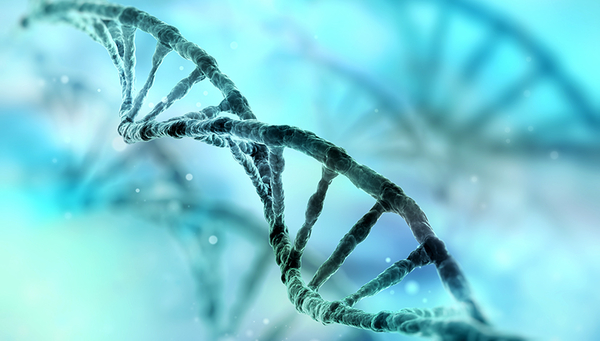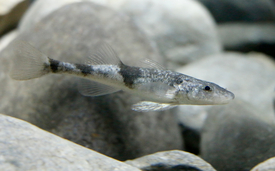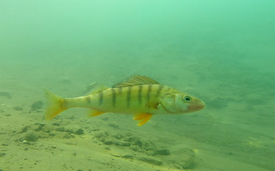Archive detail
Revealing the genetic code of Europe’s species diversity
February 1, 2022 |
Like a building plan, reference genomes provide a nearly complete genetic code of an organism, acting as a representative example of the entire species. “Comparisons of other genome sequence data with such a reference genome allow, for example, to describe in detail the variety of genetic differences amongst individuals of a species,” explains Philine Feulner, Group Leader of the Department of Fish Ecology and Evolution at Eawag. Together with Nadir Alvarez from the Université de Genève, she represents the Swiss team of the European Reference Genome Atlas (ERGA). Until recently the sequencing of complete genomes was restricted to isolated model organisms, technical progress has since made it possible – and theoretically affordable – to decode the genome of most species. However, genomes in reference quality have only become available for a small fraction of all known species.
Eawag researchers are contributing the genomes of two fish species
Within the currently ongoing pilot phase of the ERGA project, Ole Seehausen, Head of the Department of Fish Ecology and Evolution at Eawag, coordinates sequencing the genomes of two species of fish: the Rhone streber (Zingel asper) and the lake perch (Perca sp). “The Rhone streber is the most threatened species of fish in Switzerland. A project is currently underway to investigate whether the last population can actually survive at all,” explains Seehausen. “The lake perch is a very important species in the ecosystem; we want to see how far it differs from the genetic repertoire of the widespread river perch.”
Eawag researchers will decode the genome of two species of fish for the Atlas: the Rhone streber (also known as Roi du Doubs; top photo) and the lake perch (bottom photo).
(Photos: Aquatis, Ole Seehausen)
In an article published in January in the journal “Trends in Ecology and Evolution”, the ERGA consortium stresses the necessity and importance of reference genomes for the better understanding of species diversity and for biodiversity conservation. Although the primary pathway to maintaining biological diversity lies in protecting populations in their habitats, as well as in maintaining and restoring habitats and ecosystems, studying the genetic repertoire offers a rapidly growing palette of novel instruments for characterising biological diversity and can support the conservation efforts, write the researchers.
Genetic diversity as an early warning signal
Reference genomes provide information on (among other things) the evolutionary history of a species and serve as the basis for analysing the genomes of many individuals of the same species. This allows to estimate the adaptive potential of a population or of an entire species. The complex genomic data can provide information on numerous questions, such as aspects of species formation, the role of genetic exchange between species, the loss of genetic variation as well as the genetic characterisation of entire species communities. High-quality reference genomes for a representative fraction of species is of fundamental importance in conservation as it may allow better targeted protection measures. Studying the genomic diversity of a species can serve as an early warning signal for the loss of genetic variation, for estimating the ability of a population to persist amid environmental change, for predicting the impacts of habitat changes or overexploitation and, finally, for supporting the strategic planning of conservation measures.
European Reference Genome Atlas (ERGA)
ERGA is the official pan-European branch of the Earth BioGenome Project, a worldwide initiative with the objective of sequencing and cataloguing the genome of all currently described eukaryotic species on Earth over a period of ten years.
Information about the ERGA project
Cover picture: Like a building plan, reference genomes provide a nearly complete genetic code of an organism (Picture: iStock)
Original publication
Formenti, G; Theissinger, K; Fernandes, C.; Bista, I.; Bombarely, A.; Bleidorn, C.; Ciofi, C.; Crottini, A.; Godoy, J. A.; Höglund, J.; Malukiewicz, J.; Mouton, A.; Oomen, R.A.; Paez, S.; Palsbøll, P. J.; Pampoulie, C.; Ruiz-López, M. J.; Svardal, H.; Theofanopoulou, C.; de Vries, J.; Waldvogel, A.; Zhang, G.; Mazzoni, C.J.; Jarvis, E. D.; Bálint, M. and The European Reference Genome Atlas (ERGA) Consortium (2022) The era of reference genomes in conservation genomics; Trends in Ecology & Evolution; https://doi.org/10.1016/j.tree.2021.11.008



